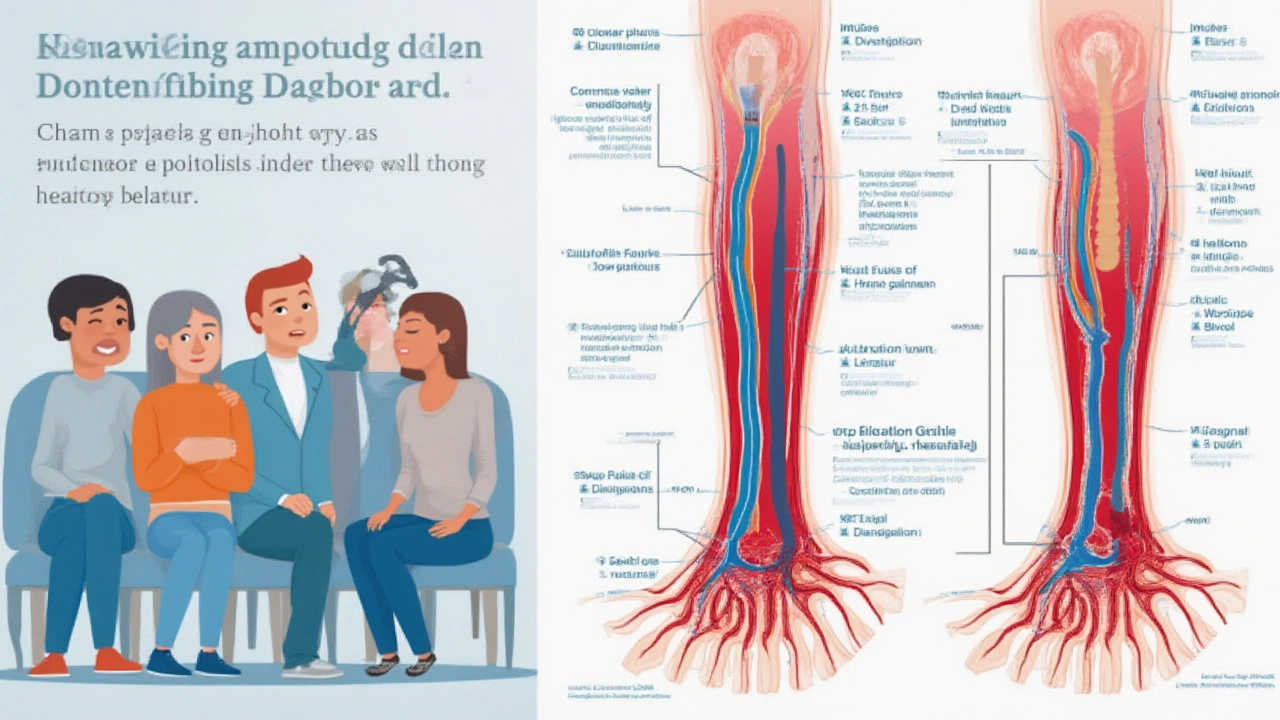Venous Diseases: What You Need to Know
Venous diseases happen when the veins in your legs don’t move blood back to the heart as they should. When that flow slows down, blood can pool, swell, and cause pain. Most people notice them as bulging veins, heavy legs, or swelling after a long day standing.
Common Types of Venous Disease
Varicose veins are the most visible sign. They look like blue or purple cords that stick out under the skin. Many people think they’re only a cosmetic issue, but they can hurt and lead to skin problems. Deep vein thrombosis (DVT) is a clot that forms deep inside a leg vein. A clot can block flow and may travel to the lungs, which is a medical emergency. Chronic venous insufficiency (CVI) is a long‑term condition where valves in the veins don’t close properly, causing fluid to leak into the surrounding tissue. CVI often brings aching, itching, or a rash around the ankle.
Managing Venous Problems Everyday
First, move around. Walking or leg lifts keep blood pumping and stop it from pooling. If you sit or stand for hours, try to shift your weight, roll your ankles, or take short walks. Compression stockings are a cheap and easy tool – they gently squeeze the leg and help veins push blood upward. Choose a pair that fits snugly but isn’t uncomfortable.
Watch your weight. Extra pounds put more pressure on your leg veins, making them work harder. A balanced diet with plenty of fruits, veggies, and fiber helps keep your weight in check and reduces inflammation. Drinking water keeps blood fluid, which can lower the chance of clots.
If you notice sudden swelling, redness, or a painful lump in your calf, call a doctor right away. Those could be signs of DVT. For varicose veins that hurt or bleed, a doctor might suggest a minor procedure like sclerotherapy or laser treatment. These fix the vein without major surgery.
Regular check‑ups are a good habit, especially if you have a family history of vein problems, have had a clot before, or spend a lot of time on your feet. A quick exam can spot early signs and let you start treatment before things get worse.
To wrap up, venous diseases are common, but you don’t have to live with them. Simple habits – moving, wearing compression, staying at a healthy weight, and getting checked when something feels off – can keep your legs feeling better and prevent serious issues.
-
Chronic Venous Insufficiency & Embolism: What Really Connects Them?
Explore how embolism and chronic venous insufficiency connect, risk factors, stats, symptoms, and actionable steps to keep your veins healthy for life.
